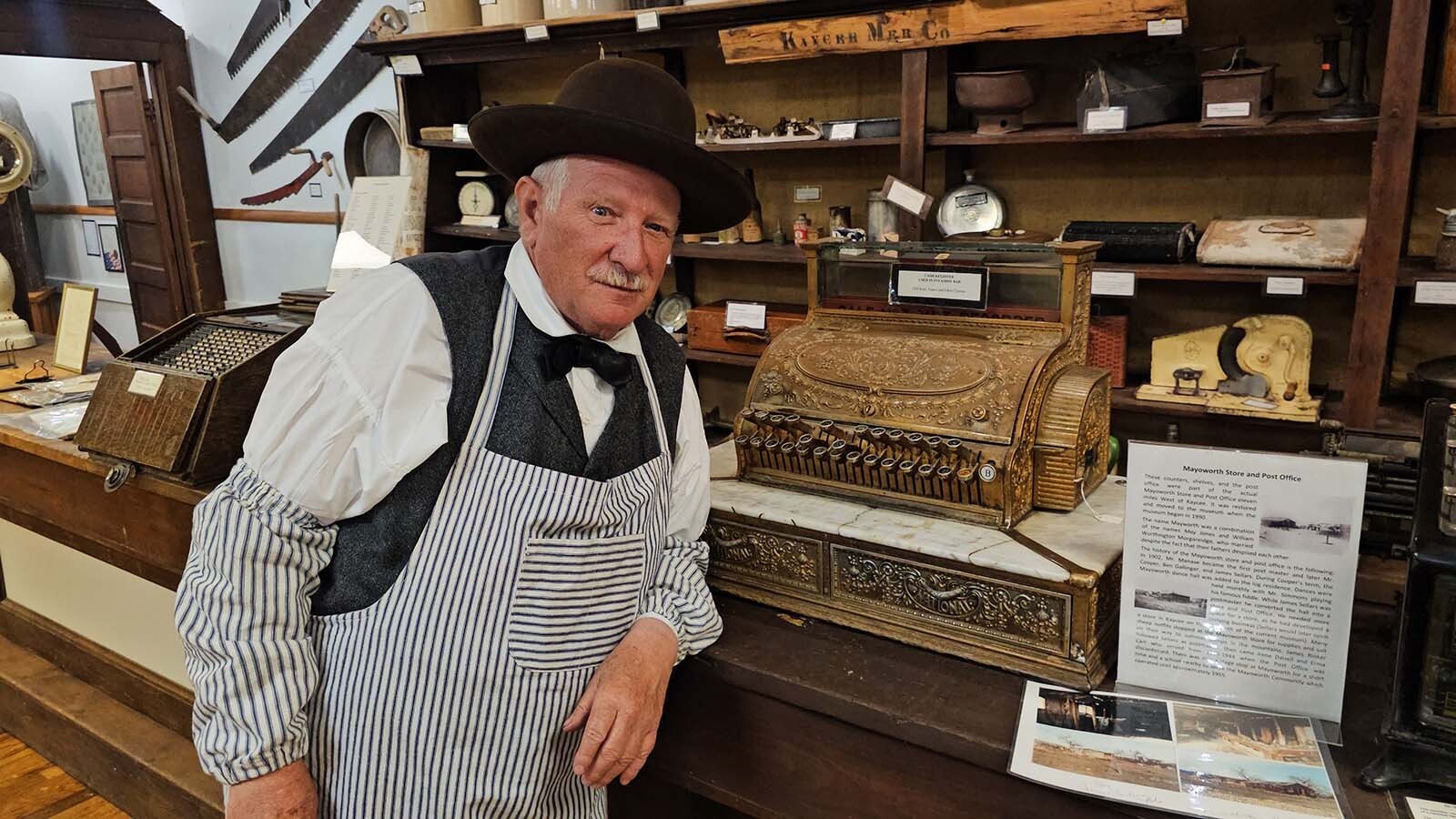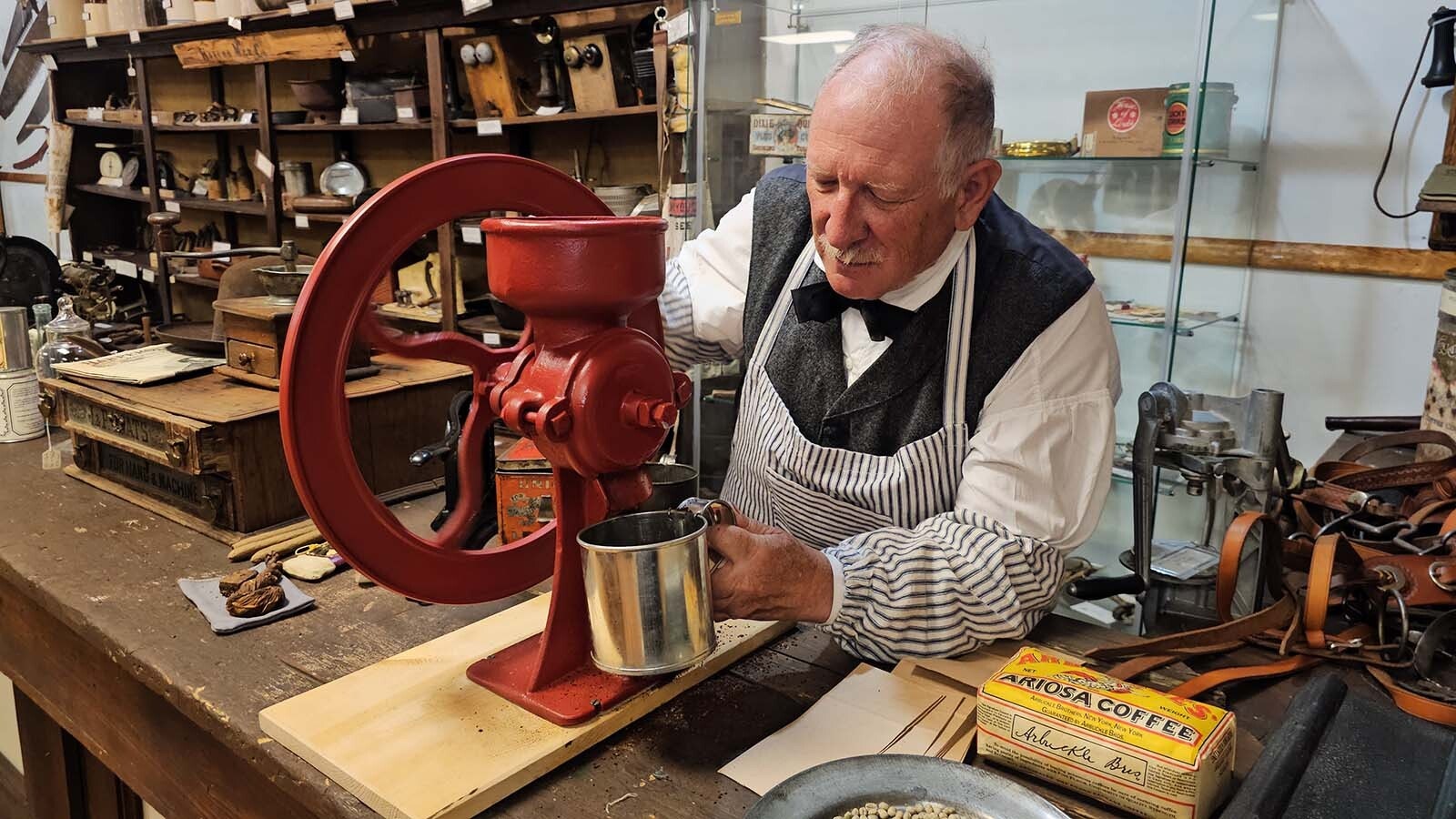In an old cabin at Cripple Creek, Colorado, a pair of vintage 1890s mule-ear boots sat in a dusty old attic for nearly a century, waiting for a new owner to come along.
Decades went by, and the boots were never disturbed by any human hand in the dusty old loft of the empty cabin.
Then one day, Jim Robinson from Casper happened along.
He knew nothing of the boots. He was just in the area to help a friend named Larry Rankin move some things out before a bulldozer came along to level everything.
“Gambling was coming into Cripple Creek,” Robinson told Cowboy State Daily. “So, they were moving Mrs. Rankin’s cabin out of there because it was historical, and I was just helping Larry move some stuff.”
At the end of the day, Rankin gestured to an old cabin he said had once belonged to an old-timer, a miner named Frank Luce.
“Go on up there and see if there’s anything in there you want,” Robinson’s friend told him. “If you find anything you want, it’s yours to keep.”
Rankin headed out for an appointment with no idea what treasures Robinson might find.
“I crawled up into the loft and there were antlers that had tags on them that said 1928,” Robinson said. “But I didn’t have a flashlight, so I was just sort of feeling around.”
Cautiously feeling around. There was no telling what he might reach out and touch in this old, dusty attic. A dead old mouse wouldn’t have been unimaginable. The cabin seemingly hadn’t had any human there for a long, long time.
And Robinson did eventually lay hands on something that was rather soft before too long. Soft and supple — leather, perhaps?
With no light in the loft, he had to hold what he’d just found down below the loft into the day’s vanishing beams of sunlight.
It was a pair of boots, he realized.
Then his eyes widened a bit as he saw what was at the top of the boots — mule ears.
They’re the long, leather straps on old-fashioned cowboy boots that helped cowboys pull high-topped, snug-fitting boots up past their calves.
Robinson, who is a historical reenactor, knew right away that an original pair of boots like this, with mule ears intact, was an exceedingly rare and special find.

Terrible Condition
Back home in Casper, Robinson’s wife wasn’t all that impressed with her husband’s newfound boots, and he really couldn’t blame her at that point.
The boots didn’t look like treasure at all.
Not only were they covered in dust, but someone had also replaced a heel with a stub cut from an old tire, nailed in place. The soles, meanwhile, had been replaced so many times the bottoms of the boots were a complete mess.
“It was still a rarity these somehow survived,” Robinson said. “This guy was probably a cowboy before he became a miner, and these boots, I would date them between 1890 to 1910.”
Robinson decided the boots were worth restoring for his reenactments. They would fill a nice niche starting with the 1850s Gold Rush era on through the cattle drive era, which lasted from 1850 through about 1910.
“I took them to the best shoe guy I knew in the spring, and he rebuilt the bottom,” Robinson said. “And then I put that Tandy’s hide and leather preserver on them and worked that in there.”
Robinson did that every night, putting as much love and care into the old mule-ears as he could, until one day he was finally able to slip the boots on.
“They fit me kind of tight at first,” he said.
But with time and continued care, the boots soon fit him like they had always belonged to him, a perfect pair of authentic, historic cowboy boots.

Worth Thousands
Robinson has been offered all kinds of things for his rare, authentic mule-ear cowboy boots, from valuable historic rifles to outright cash.
But these boots are not for sale. They are an irreplaceable part of a costume that Robinson took with him to Hollywood and beyond.
“We were doing cavalry reenactment and stuff at the time, and some of these movies were looking for extras,” Robinson recalled. “Because if you put somebody with pink hair on a horse and give him a pistol and then have them shoot their guns off, you’d have quite a scrambled egg.”
Movie directors in the 90s filming old westerns or old war movies liked hiring reenactors, Robinson said, because they are experts in how things have been done historically. They don’t need a lot of extra training to do everything in a period-authentic way.
His skill in that area earned Robinson a spot in a variety of movies, some of which have included his authentic, mule-ear boots, like Tom Berenger’s 1997 film “Rough Riders” and Ang Lee’s 1999 film “Ride with the Devil.”
He was also an extra in Kevin Costner’s 1997 film, “The Postman,” as well as a couple of other films over the years.
In one movie, Robinson recalls portraying Union soldiers one day, then turning around to play Confederate soldiers the next. That meant Robinson was literally shooting at himself in the finished film.
“You just never know where you’re going to end up with some of this stuff (reenacting),” Robinson said, chuckling.
In addition to movies, reenacting has taken Robinson all over the country. He helped reenact an amphibious landing in 1994 for the 50th anniversary of D-Day in Chicago, for example, and he’s helped portray rough riders for Cheyenne Frontier Days.
It’s also allowed him to meet some very interesting people, ranging from the famous — Sam Elliott for example — to not-so-famous, fellow reenactors from across the country, who became new friends.

Paying It Forward
Reenacting is something Robinson still loves, though these days he’s not playing “young buck” soldiers or cowboys anymore.
He jokes these days he’d be playing an old, retired cowboy with fading eyesight. Though that retired cowboy would still have a merry twinkle in his eye.
Robinson is more focused these days on passing along his knowledge of old ways and old times to a new generation of youths who are interested in all things historical, like Clay DeWitt and Derek Cheser, who were among reenactors at the Hoofprints of the Past Museum’s recent Living History Day in Kaycee.
The two appeared in authentic infantryman and cavalryman uniforms. Parts of the costume were borrowed, but they are learning to make all the pieces themselves.
That’s not all. They’re also learning all of the maneuvers as well, Robinson said, so that they can be part of a group that helps put on reenactment events across Wyoming.
That group is called the Platte Bridge Company, led by Nic Skalicky. While based in Casper, the group has members across the state, dedicated to keeping Cowboy State history alive.
Skalicky told Cowboy State Daily a focus for the group is developing youth leadership and communication skills, as well as teaching them about the history of their nation.
“We’re going to start up a contingent of cavalry stuff, and working with the kids, they’ll be building their McClellan saddles,” Robinson said. “Those were a cavalry saddle, and we’ll also teach them how to modify them into the Civil War period.”
Robinson foresees a fun future for the youths involved, if they become good at their craft.
“They very well could be in the movies,” Robinson said. “If they get good and get known.”
Renée Jean can be reached at renee@cowboystatedaily.com.





